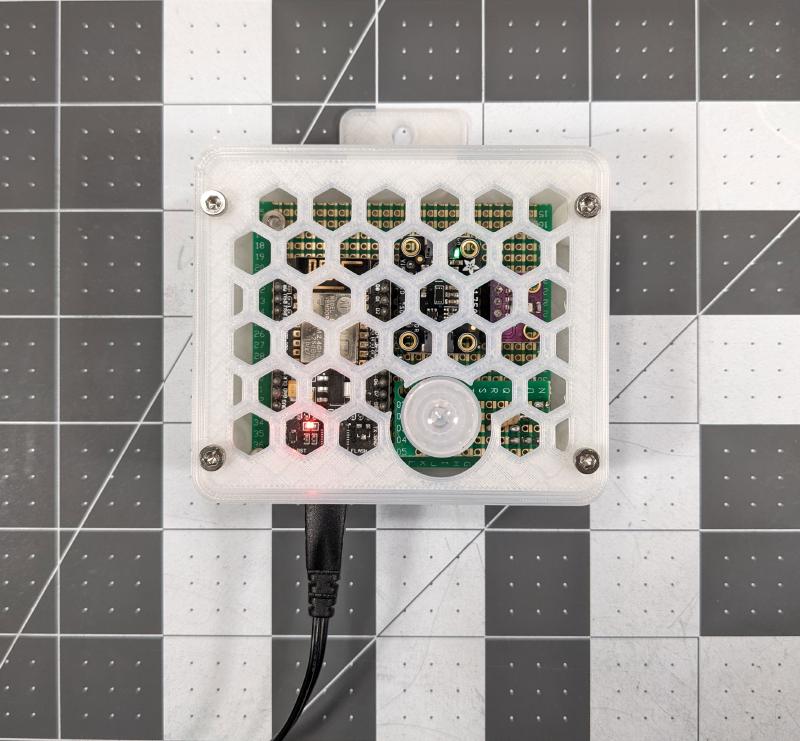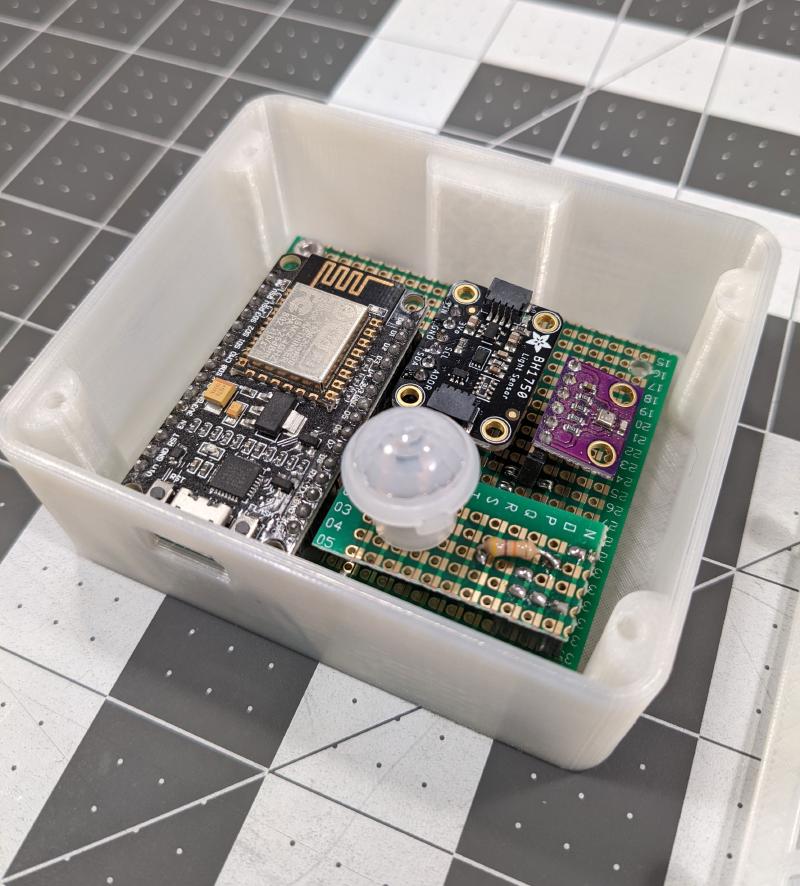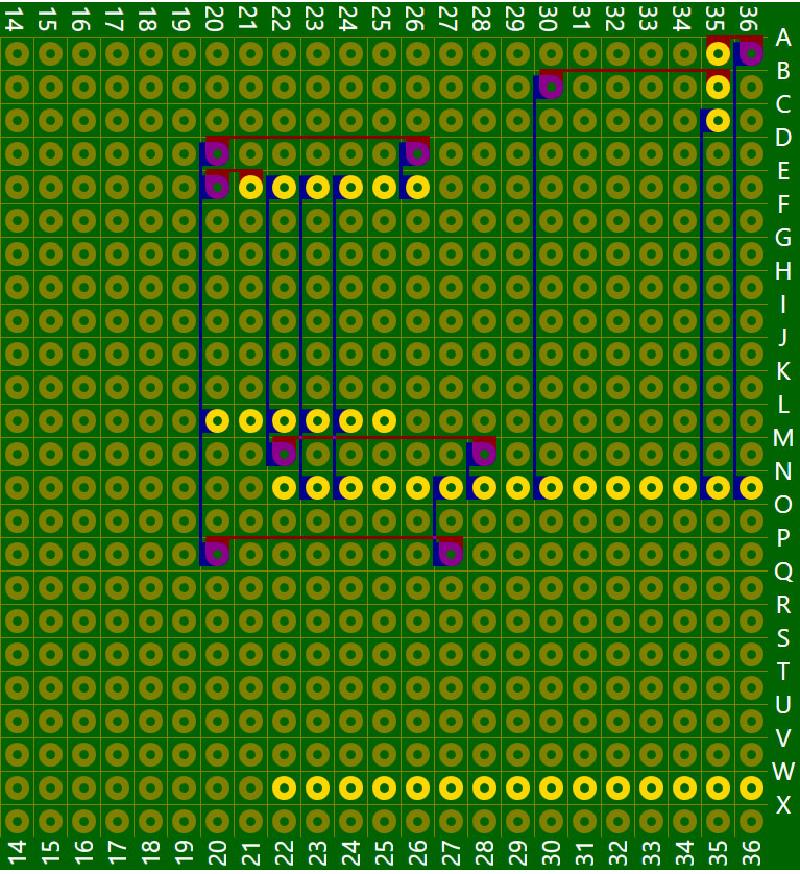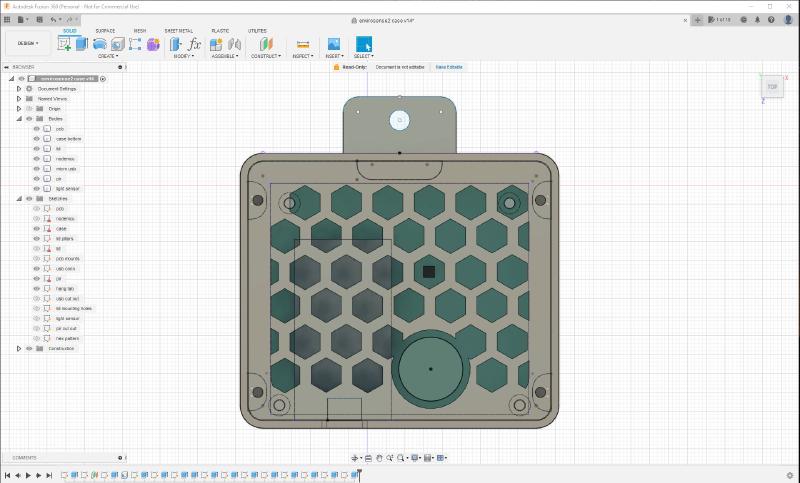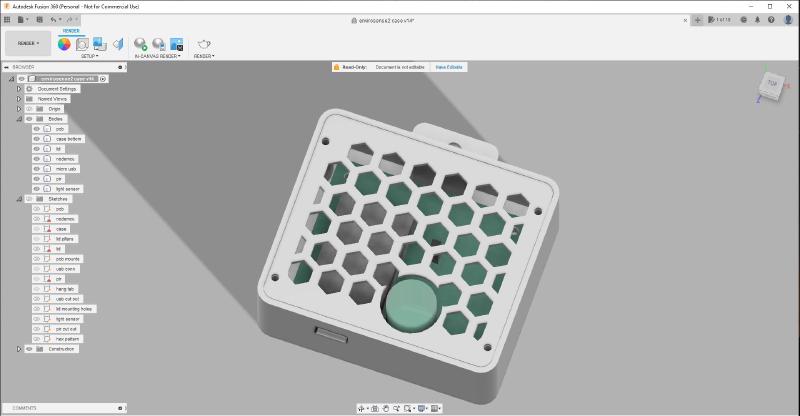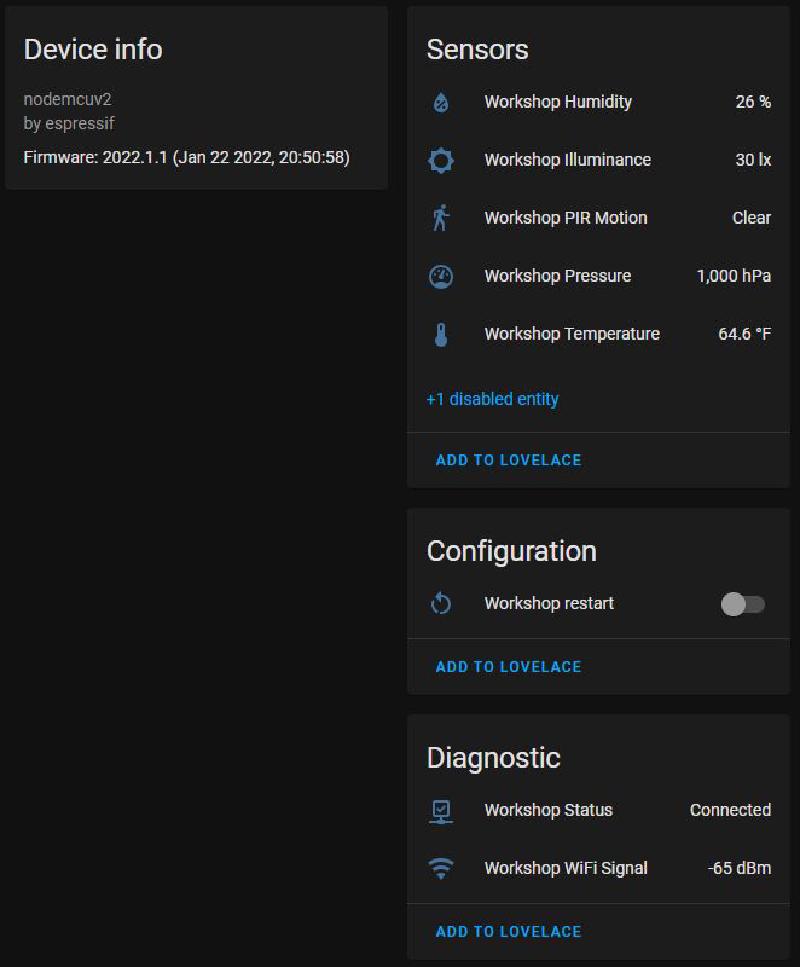Sometime early last year I replaced my SmartThings home automation hub with a Home Assistant VM running on an Intel NUC.
Not long after that I converted my Envirosense boards (see previous post) to run the ESPHome firmware and started scraping Prometheus metrics from Home Assistant.
There was one thing I wasn’t happy about with my original design.
The PIR sensor was frequently showing false positive motion events.
This seems to have gotten worse with the switch to the ESPHome firmware. It appears to be a known issue that these HC-SR501 modules are easily triggered by Wifi interference.
So I decided to redesign the board and enclosure to use a better PIR sensor and also added an ambient light sensor.
I used some Perf+ 2 wire free electronic prototyping board that I had picked up a while back. Unfortunately it looks like this is no longer available anywhere. There’s a simple windows .NET based circuit design program called Perfy, that I used for the board layout.
Here’s the main parts list:
- NodeMCU ESP8266
- Bosch BME280 breakout board
- Panasonic EKMC1609111
- Adafruit BH1750 Light Sensor
- 1 x 47KΩ resistor (used as a pull-down on the PIR breakout)
Example ESPHome configuration below:
1
2
3
4
5
6
7
8
9
10
11
12
13
14
15
16
17
18
19
20
21
22
23
24
25
26
27
28
29
30
31
32
33
34
35
36
37
38
39
40
41
42
43
44
45
46
47
48
49
50
51
52
53
54
55
56
57
58
59
60
61
62
63
64
65
66
67
68
69
70
71
72
73
74
75
76
77
78
79
80
81
82
83
84
85
86
87
88
89
90
91
|
# EnviroSense ESPHome device configuration
esphome:
name: sense2
esp8266:
board: nodemcuv2
wifi:
ssid: !secret wifi_ssid
password: !secret wifi_password
power_save_mode: HIGH
logger:
api:
encryption:
key: !secret api_key
ota:
password: !secret ota_password
switch:
- platform: restart
name: Workshop restart
i2c:
sda: D2
scl: D1
sensor:
- platform: bme280
temperature:
name: Workshop Temperature
oversampling: 1x
accuracy_decimals: 1
pressure:
name: Workshop Pressure
oversampling: 1x
accuracy_decimals: 0
humidity:
name: Workshop Humidity
oversampling: 1x
accuracy_decimals: 0
address: 0x77
update_interval: 60s
- platform: bh1750
name: "Workshop Illuminance"
address: 0x23
measurement_duration: 69
resolution: 4.0
accuracy_decimals: 0
update_interval: 60s
- platform: wifi_signal
name: Workshop WiFi Signal
update_interval: 60s
binary_sensor:
- platform: gpio
name: Workshop PIR Motion
pin:
number: D6
mode:
input: true
pullup: false
device_class: motion
filters:
- delayed_on: 10ms
- delayed_off: 60000ms
on_press:
then:
- light.turn_on: led
on_release:
then:
- light.turn_off: led
- platform: status
name: Workshop Status
output:
- platform: esp8266_pwm
id: onboard_led
pin:
number: D0
inverted: true
light:
- platform: monochromatic
output: onboard_led
id: led
|
Note that you’ll also need an an additional secrets.yaml file that has matching entries for the various !secret variables referenced in the above example.
